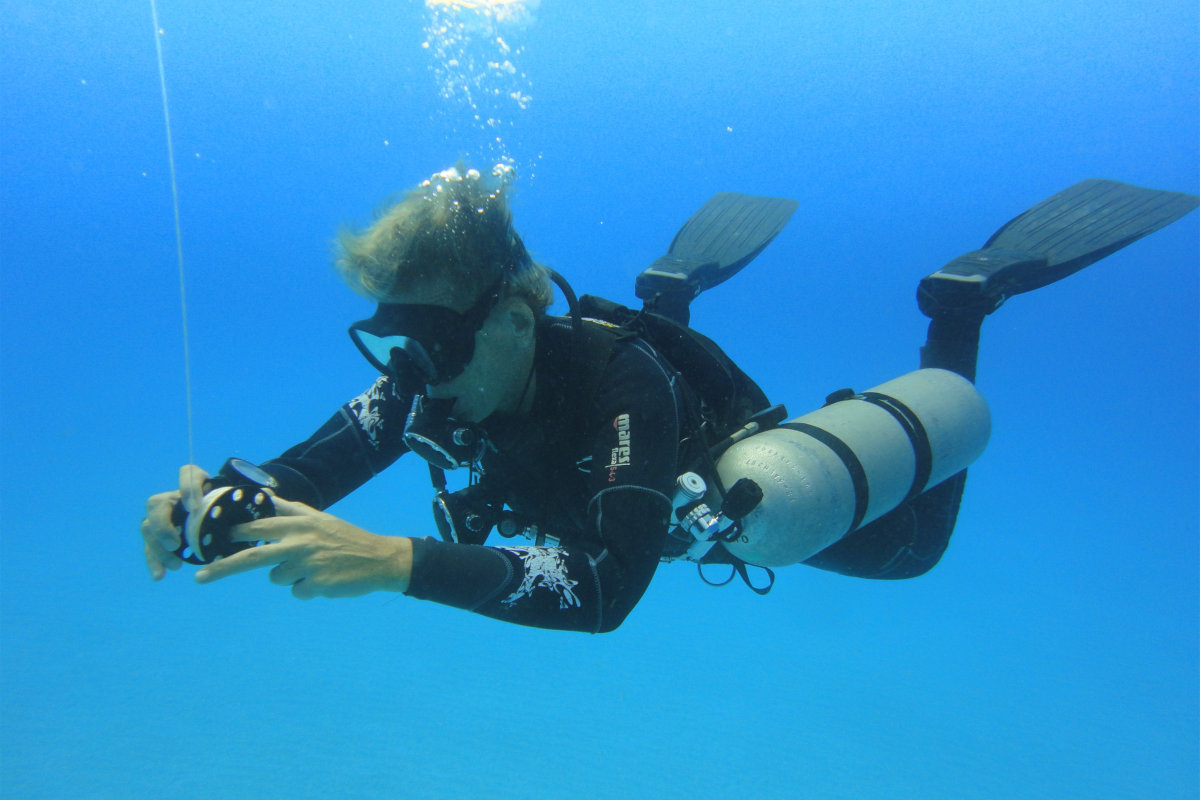Capturing the beauty of the underwater world through photography can be incredibly rewarding.
However, it requires a blend of technical skill, knowledge of marine life, and an understanding of diving principles.
This comprehensive guide will provide you with the essential tips and techniques to capture stunning underwater photos while diving.
Introduction to underwater photography
Underwater photography allows divers to document their adventures and share the beauty of the ocean with others.
It combines the challenges of scuba diving with the art of photography, requiring patience, practice, and the right equipment.
Whether you are a beginner or an experienced photographer, mastering underwater photography can enhance your diving experience and provide you with stunning visual memories.
Why underwater photography?
Underwater photography offers a unique perspective of the marine environment, showcasing the vibrant colors, diverse marine life, and intricate underwater landscapes that are often unseen by the general public.
It also plays a crucial role in marine conservation by raising awareness about the beauty and fragility of underwater ecosystems.
YOU CAN ALSO READ: Everything About Scuba Diving: Explore and Live the Underwater Adventure
Choosing the right underwater camera gear
Selecting the right camera gear is the first step in capturing stunning underwater photos. Your choice of equipment will depend on your budget, experience level, and the type of photos you wish to take.
Cameras
There are several types of cameras suitable for underwater photography:
- Compact cameras: ideal for beginners, compact cameras are easy to use and often come with built-in underwater settings. They are affordable and portable, making them a great choice for casual divers.
- Mirrorless cameras: these cameras offer high image quality and interchangeable lenses, providing more flexibility for different shooting scenarios. They are lighter and more compact than DSLRs.
- DSLR cameras: best suited for experienced photographers, DSLRs offer the highest image quality and extensive manual controls. They are larger and require more advanced housing and accessories.
Housings
Underwater housings are essential for protecting your camera from water damage. Ensure the housing is compatible with your camera model and rated for the depths you plan to dive. Look for features such as ergonomic controls, sturdy construction, and ease of use.
Strobes and lighting
Proper lighting is crucial for underwater photography.
Strobes (underwater flashes) help illuminate your subjects and bring out the vibrant colors lost at depth.
Consider investing in one or two strobes for better lighting control. Continuous lights are also useful for video shooting and close-up photography.
Lenses and accessories
Choose lenses based on the type of photography you plan to do. Wide-angle lenses are great for capturing large scenes and marine life, while macro lenses are perfect for photographing small creatures. Additional accessories like wet lenses, focus lights, and color filters can enhance your photography capabilities.
Mastering the basics of underwater photography
Understanding the basics of underwater photography will help you capture better images. Start with these fundamental techniques:
Buoyancy control
Good buoyancy control is essential for stable shots and protecting the marine environment. Practice hovering and moving smoothly in the water to avoid disturbing the seabed or marine life.
Camera settings
- ISO: use a low ISO setting (100-400) to reduce noise and maintain image quality.
- Aperture: adjust the aperture (f-stop) based on your desired depth of field. A smaller aperture (higher f-stop) increases depth of field, while a larger aperture (lower f-stop) creates a shallow depth of field.
- Shutter speed: use a fast shutter speed (1/125s or faster) to freeze motion and avoid blurriness.
- White balance: set the white balance to underwater mode or manually adjust it to correct color shifts caused by water.
Focus and exposure
Ensure your subject is in sharp focus by using autofocus or manual focus techniques. Check your exposure settings to avoid overexposed or underexposed images.
Use your camera’s histogram to evaluate exposure levels accurately.
Understanding light and color underwater
Light behaves differently underwater, affecting the colors and visibility in your photos. Understanding these changes will help you adjust your techniques for better results.
Color loss
Water absorbs light, causing colors to fade with depth. Red is the first color to disappear, followed by orange, yellow, green, and blue. Using strobes or external lights helps restore these colors.
Light diffusion
Water scatters light, reducing contrast and sharpness. Staying close to your subject and using artificial lighting can help mitigate these effects.
Optimal lighting techniques
- Strobe positioning: position your strobes at a 45-degree angle to reduce backscatter (light reflecting off particles in the water). Experiment with strobe angles and distances for the best results.
- Natural light: utilize natural light by diving during mid-morning or early afternoon when the sun is high. Shallow dives and clear waters enhance the effectiveness of natural light.
Composition tips for underwater photography
Composition is key to creating visually appealing underwater photos.
Use these tips to improve your compositions:
Rule of thirds
Divide your frame into thirds, both horizontally and vertically. Place your subject at the intersections of these lines to create a balanced and engaging composition.
Leading lines
Use natural lines, such as coral formations or rays of light, to lead the viewer’s eye toward the main subject.
Negative space
Incorporate negative space to emphasize your subject and create a sense of scale. A simple background can make your subject stand out.
Close focus wide angle (CFWA)
CFWA involves getting close to your subject while using a wide-angle lens.
This technique enhances the sense of depth and brings out details in both the foreground and background.
Techniques for capturing marine life
Photographing marine life requires patience, respect for the environment, and knowledge of animal behavior. Here are some techniques to help you capture stunning images of underwater creatures:
Approach slowly
Move slowly and calmly to avoid startling marine life. Approach from the side rather than head-on to appear less threatening.
Eye contact
Focus on capturing the eyes of marine creatures to create a more engaging and relatable image.
Predict behavior
Study the behavior of marine animals to anticipate their movements. Understanding their habits will help you position yourself for the best shots.
Timing
Be patient and wait for the right moment to capture your shot. Timing is crucial, especially when photographing fast-moving or elusive animals.
YOU CAN ALSO READ: How to choose the right diving school: accreditation and more
Common challenges and how to overcome them
Underwater photography comes with its unique set of challenges.
Here’s how to overcome some common issues:
Low light conditions
Use strobes or continuous lights to illuminate your subject and enhance color and detail in low light conditions.
Backscatter
Position your strobes correctly and avoid stirring up sediment to minimize backscatter. Use editing tools to remove remaining particles.
Buoyancy control
Practice buoyancy control regularly to improve stability and reduce camera shake. Use your BCD and breathing techniques to maintain neutral buoyancy.
Camera maintenance
Rinse your camera gear with fresh water after each dive to remove salt and debris. Regularly check and maintain your equipment to prevent malfunctions.
Safety tips for underwater photographers
Safety should always be a priority in underwater photography.
Follow these tips to ensure a safe diving experience:
Dive with a buddy
Always dive with a buddy for safety and assistance.
Communicate your plans and stay within visual and communication range.
Monitor air supply
Keep track of your air supply and inform your buddy when you reach half of your tank capacity. Plan your dives to ensure a safe ascent with enough air.
Avoid dangerous marine life
Respect marine life and maintain a safe distance. Avoid touching or disturbing creatures, and be aware of your surroundings to prevent accidents.
Follow dive protocols
Adhere to established dive protocols, including ascent rates, safety stops, and depth limits. Proper dive planning and execution are crucial for safety.
Conclusion
Capturing stunning underwater photos while diving requires a combination of technical skills, proper equipment, and a deep understanding of the marine environment.
By following the tips and techniques outlined in this guide, you can enhance your underwater photography and create breathtaking images that showcase the beauty of the ocean.
Ready to capture your underwater adventure?
Contact Pluto Dive today to learn more about our underwater photography courses, dive packages, and expert guidance for planning your ideal scuba diving vacation. Our experienced team is here to help you every step of the way.
Contact Pluto Dive Today!
- Location: 40th Street between 5th and 10th Avenues, Playa del Carmen, Mexico
- Email: plutodive@gmail.com
- Phone: +52 984 151 9045 | +52 984 151 9046
Take the plunge with Pluto Dive and explore the underwater wonders of Playa del Carmen while capturing stunning photographs to share and cherish.
Let’s make your diving and photography dreams a reality!



